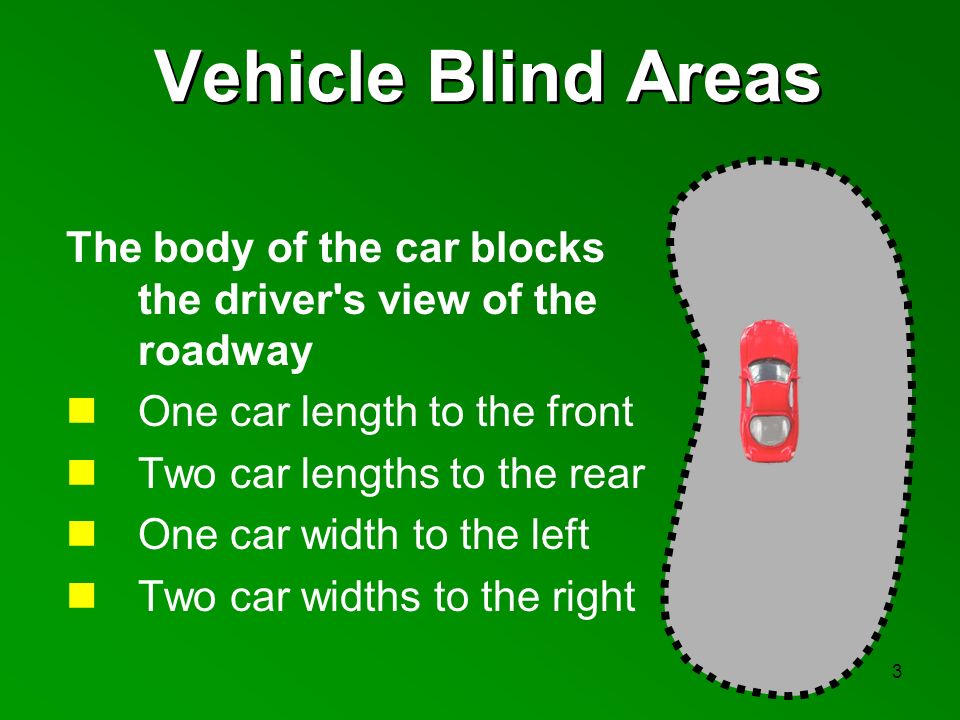Driver Reference Points

Start studying Driver's Ed Chapter 4. Learn vocabulary. As viewed from the driver's seat. Reference points on a vehicle that are typical for most drivers. Personally I did not have a lot of reference points when I was a solo driver. I had to learn 'the hard way' that reference points are required for instructors.
Where Am I??? Using Reference Points for Driving and Parking Copyright: The Educated Driver The illustrations used in this presentation are a guide to Vehicle Reference Points (VRP), and they will differ slightly from vehicle to vehicle.

However, they are fairly reliable, and it is up to you, the vehicle owner, to determine the PRECISE VRP of your vehicle. • Copyright: The Educated Driver 90% of our decision-making, while driving, is derived from what we see. Unfortunately, we have been instructed for years to “keep your eyes on the road ahead”, which is a vision-fault. Your eyes should be constantly moving, searching for, and identifying, hazards and the driving environment. One of the biggest neglects in vision training for new drivers, is identifying the vehicle’s actual location, within a lane, next to a curb, or parking. Sky crawlers ost rar full version software download.
We are going to have a look at how using Visual Reference Points (VRP) can assist you in knowing precisely where you are. • Copyright: The Educated Driver Lane Positioning For the past several decades, Highway Departments have been moving towards a standard, 12-foot wide lane, to more easily accommodate larger SUV’s and trucks. A new driver tends to feel “crowded” in a lane that generally has 3 feet of space on either side of it, because they haven’t been taught how to reference ahead using sight lines. This position (centered) in the lane, is referred to as LP1 (Lane Position 1) • Copyright: The Educated Driver Lane & Curb Positioning For positioning your vehicle in a lane, you have four basic VRP sightlines, two on the left and two on the right. Each one is designed to put you within either 3-6 inches of the lane- line or curb, or 3 feet from the lane-line.
To determine YOUR vehicle’s VRP, park in an open area next to a curb or visible line to your left, within 3-6 inches if the line. Exit the vehicle to be sure of your position. Then, sitting in a normal driving position, and without moving your head, look towards the curb and notice where the curb or line intersects with your vehicle. It should be right about where your left headlight, or hood seam, is. 
This can help you to be centered in a parking space. Repeat this for parking 3 feet from the line, and you should notice that the point of intersection is just above the left wheel. This VRP will help you to maintain center-of-lane (lane position 1) while driving. • Copyright: The Educated Driver The Circles show the corresponding locations in the drawing, as well as in the photos. 2003 Mitsubishi Galant: VRP is above the left headlight.